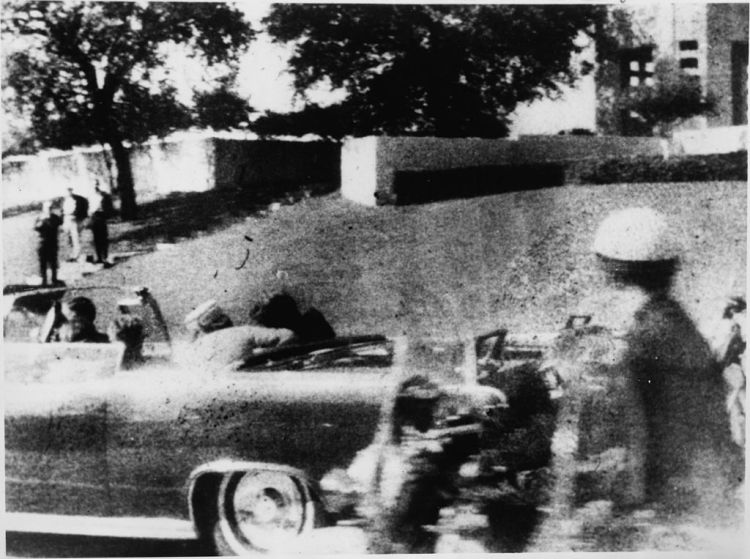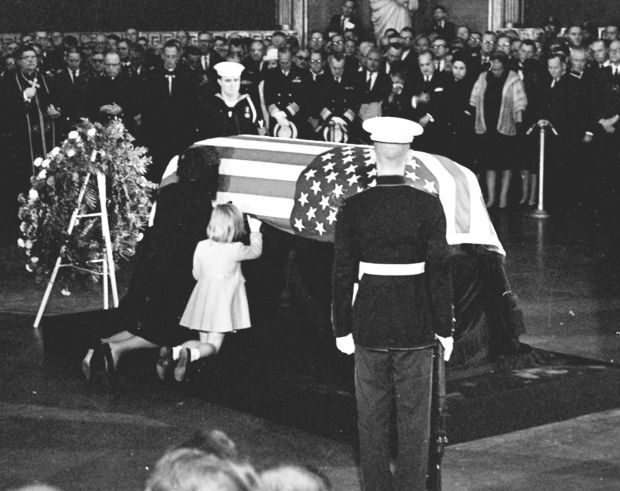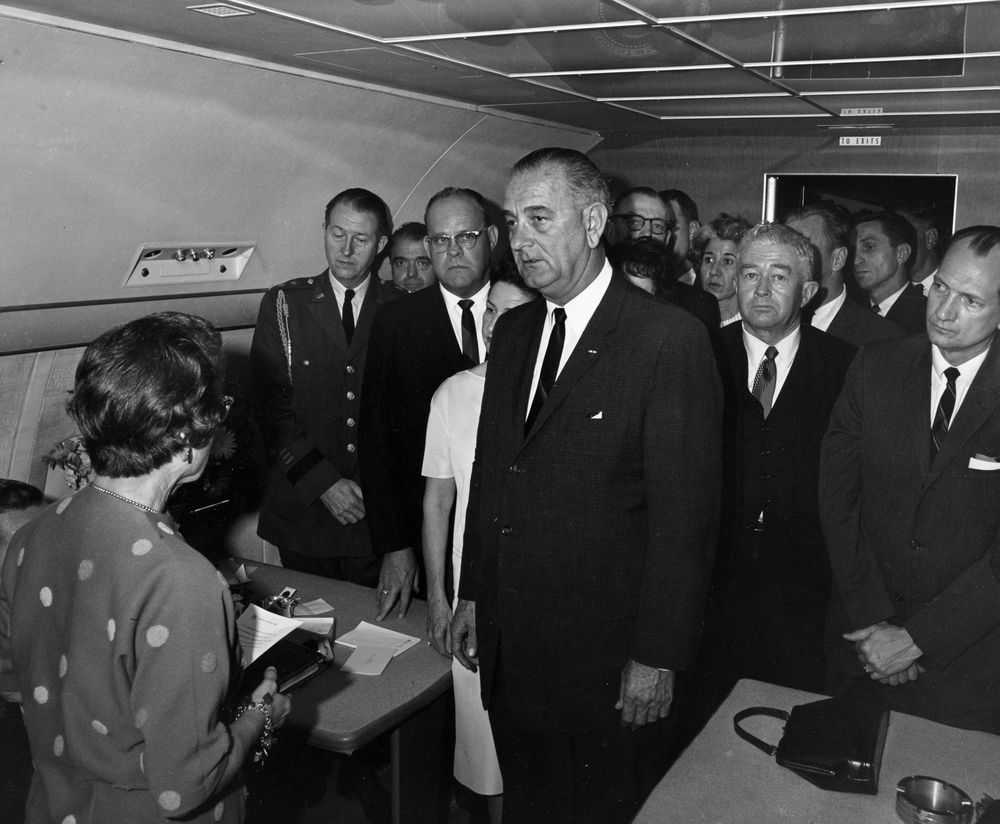
While the world is remembering the 60th Anniversary of the Assassination of John Fitzgerald Kennedy. I want to focus on a different aspect of JFK, his time during World War II. Specifically, his time on PT 109.
“The President of the United States takes pleasure in presenting the NAVY and MARINE CORPS MEDAL to/ LIEUTENANT JOHN FITZGERALD KENNEDY UNITED STATES NAVAL RESERVE/ for service as set forth in the following/ CITATION:/ ‘For extremely heroic conduct as Commanding Officer of Motor Torpedo Boat 109 following the collision and sinking of that vessel in the Pacific War Area of August 1-2, 1943. Unmindful of personal danger, Lieutenant (then Lieutenant, Junior Grade) Kennedy unhesitatingly braved the difficulties and hazards of darkness to direct rescue operations, swimming many hours to secure aid and food after he had succeeded in getting his crew ashore. His outstanding courage, endurance and leadership contributed to the saving of several lives and were in keeping with the highest traditions of the United States Naval Service.’/ For the President,/ James Forrestal/ Secretary of the Navy.”
The text above is the citation for the Navy and Marine Corps Medal awarded to John F. Kennedy.
On 29 May 1917, JFK was born of Irish descent in Brookline, Massachusetts. After graduating from Harvard in 1940, he entered the Navy. Despite having a bad back, JFK used his father’s (Joseph P. Kennedy) influence to get into the war. He started out in October 1941 as an ensign with a desk job for the Office of Naval Intelligence. Kennedy was reassigned to South Carolina in January 1942. On 27 July 1942, Kennedy entered the Naval Reserve Officers Training School in Chicago.
In 1943, when his PT boat was rammed and sunk by a Japanese destroyer, Kennedy, despite grave injuries, led the survivors through perilous waters to safety.
PT-109 was a PT boat (Patrol Torpedo boat) last commanded by Lieutenant, junior grade (LTJG) John F. Kennedy in the Pacific Theater during World War II. Kennedy’s actions to save his surviving crew after the sinking of PT-109 made him a war hero, which proved helpful in his political career.
PT-109 stood at her station, one of fifteen PT boats that had set out to engage, damage, and maybe even turn back the well-known “Tokyo Express.” US forces gave that name to the Japanese navy’s more or less regular supply convoy to soldiers fighting the advance of US forces in the islands farther south.
When the patrol actually came into contact with the Tokyo Express—three Japanese destroyers acting as transports with a fourth serving as escort—the encounter did not go well. Thirty torpedoes were fired without damaging the Japanese ships. No US vessels suffered hits or casualties. Boats that had used up their complement of torpedoes were ordered home. The few that still had torpedoes remained in the strait for another try.

Lieutenant John F. Kennedy’s encounter with a Japanese destroyer on the night of 1 August 1943 may be the most famous small-craft engagement in naval history, and it was an unmitigated disaster.
At a later date, when asked to explain how he had come to be a hero, Kennedy replied laconically, “It was involuntary. They sank my boat.”
To understand the events of August 1–2, 1943, which culminated in the sinking of PT-109, it is important to remember that it was dark—deeply, unrelievedly dark. The disorienting effect, even for experienced sailors, of a moonless, starless night on the ocean should not be underestimated. In this profound darkness, PT-109 stood at her station in Blackett Strait, south of Kolombangara in the Solomon Islands, one of the remnants of an operation born into futility, the heir to bad planning and worse communication.
The destroyer, later identified as the Amagiri, struck PT 109 just forward of the forward starboard torpedo tube, ripping away the starboard aft side of the boat.

The impact tossed Kennedy around the cockpit. Most of the crew were knocked into the water. The one man below decks, engineer Patrick McMahon, miraculously escaped, although he was badly burned by exploding fuel.
When PT-109 was cut in two around 2:27 a.m., a fireball of exploding aviation fuel 100-foot-high (30 m) caused the sea surrounding the ship to flame. Seamen Andrew Jackson Kirksey and Harold William Marney were killed instantly, and two other members of the crew were badly injured and burned when they were thrown into the flaming sea surrounding the boat. For such a catastrophic collision, explosion, and fire, there were few men lost compared to the losses on other PT boats hit by shell fire. PT-109 was gravely damaged, with watertight compartments keeping only the forward hull afloat in a sea of flames.
PT-169, closest to Kennedy’s craft, launched two torpedoes that missed the destroyer, and PT-162’s torpedoes failed to fire at all. Both boats turned away from the scene of action and returned to base without checking for survivors of PT-109. There had been no procedure outlined by Commander Warfield on searching for survivors or what the PT flotilla should do in case a ship was lost. In the words of Captain Robert Bulkley, a naval historian, “This was perhaps the most confused and least effectively executed action the PTs had been in. Eight PTs fired 30 torpedoes. The only confirmed results were the loss of PT-109 and damage to the Japanese destroyer Amagiri.”
Fear that PT 109 would go up in flames drove Kennedy to order the men who still remained on the wreck to abandon the ship. But the destroyer’s wake dispersed the burning fuel, and when the fire began to subside, Kennedy sent his men back to what was left of the boat. From the wreckage, Kennedy ordered the men with him, Edgar Mauer and John E. Maguire, to identify the locations of their crew mates still in the water. Leonard Thom, Gerard Zinser, George Ross, and Raymond Albert were able to swim back on their own.
Kennedy swam out to McMahon and Charles Harris. Kennedy towed the injured McMahon by a life-vest strap and alternately cajoled and berated the exhausted Harris to get him through the challenging swim. Meanwhile, Thom pulled in William Johnston, who was debilitated by the gasoline he had accidentally swallowed and the heavy fumes that lay atop the water. Finally, Raymond Starkey swam in from where he had been flung by the shock. Floating on and around the hulk, the crew took stock.
Kennedy had been on the swim team at Harvard; even towing McMahon by a belt clamped in his teeth, he was undaunted by the distance. Some were good swimmers, but several men were not. And two, Johnston and Mauer, could not swim at all. These last two were lashed to a plank, and the other seven men pulled and pushed as they could.
Kennedy arrived first at the island. It was named Plum Pudding, but the men called it “Bird” Island because of the guano that coated the bushes. Exhausted, Kennedy had to be helped up the beach by the man he had towed. He collapsed and waited for the rest of the crew. But Kennedy’s swimming was not over.
Plum Pudding Island was only 100 yards (91 m) in diameter, with no food or water. The exhausted crew dragged themselves behind the tree line to hide from passing Japanese barges. The night of 2 August, Kennedy swam 2 miles (3.2 km) to Ferguson Passage to attempt to hail a passing American PT boat. On 4 August, he and Lenny Thom assisted his injured and hungry crew on a demanding swim 3.75 miles (6.04 km) south to Olasana Island which was visible to all from Plum Pudding Island. They swam against a strong current, and once again, Kennedy towed McMahon by his life vest. They were pleased to discover Olasana had ripe coconuts, though there was still no fresh water.[46] On the following day, 5 August, Kennedy and George Ross swam for one hour to Naru Island, visible at an additional distance of about .5 miles (0.80 km) southeast, in search of help and food and because it was closer to Ferguson Passage where Kennedy might see or swim to a passing PT boat on patrol. Kennedy and Ross found a small canoe, packages of crackers and candy, and a fifty-gallon drum of drinkable water left by the Japanese, which Kennedy paddled back to Olasana in the acquired canoe to provide his crew. It was then that Kennedy first spoke to native Melanesian coast watchers Biuku Gasa and Eroni Kumana on Olasana Island. Months earlier, Kennedy had learned a smattering of the pidgin English used by the coast watchers by speaking with a native boy. The two coast watchers had finally been convinced by Ensign Thom that the crew were from the lost PT-109, when Thom asked Gasa if he knew John Kari, and Gasa replied that he worked with him. Realizing they were with Americans, the coast watchers brought a few yams, vegetables, and cigarettes from their dugout canoe and vowed to help the starving crew. But it would take two more days for a full rescue.
The next morning was 6 August. Kennedy returned with Gasa and Kumana to Naru. As he was swimming back, he intercepted Ross along the way. The islanders showed the two Americans where a boat had been hidden on Naru. Kennedy was at a loss for a way to send a message, but Gasa demonstrated how to scratch a few words into the husk of a green coconut.

Gasa and Kumana left with the message—
NAURO ISL
COMMANDER . . . NATIVE KNOWS
POS’IT . . . HE CAN PILOT . . . 11 ALIVE
NEED SMALL BOAT . . . KENNEDY
As they waited for a rescue, Kennedy insisted on taking the 2-man canoe with Ross into Ferguson Passage. Heavy seas swamped the canoe and battered the men. They barely made it back to Naru. Eight islanders appeared the next morning, 7 August, shortly after Kennedy and Ross awoke. They brought food and instructions from the local Allied coastwatcher, Lt. A. Reginald Evans, who instructed Kennedy to come to Evans’s post.
Stopping long enough at Olasana to feed the crew, the islanders hid Kennedy under a pile of palm fronds, paddling him to Gomu Island in Blackett Strait. Early in the evening of 7 August, a little more than six days after the sinking of PT-109, Kennedy stepped onto Gomu. There was still a rescue to be planned with Evans, no small thing in enemy-held waters, but the worst of the ordeal of PT 109 was over.

Evans already notified his commander of the discovery of survivors from PT-109, and the base commander proposed sending a rescue mission directly to Olasana. Kennedy insisted on being picked up first so he could guide the rescue boats, PT 157 and PT 171, among the reefs and shallows of the island chain.
Late on the night of August 7, the boats met Kennedy at the rendezvous point, exchanging a prearranged signal of four shots. Kennedy’s revolver was down to only three rounds, so he borrowed a rifle from Evans for the fourth. Standing up in the canoe to give the signal, Kennedy did not anticipate the rifle’s recoil, which threw him off balance and dumped him in the water. A soaking wet and thoroughly exasperated Navy lieutenant climbed aboard PT 157.
The PT boats crossed Blackett Strait under Kennedy’s direction. They eased up to Olasana Island early in the morning of August 8. The exhausted men of PT 109 were all asleep. Kennedy began yelling for them, much to the chagrin of his rescuers, who were nervous about the proximity of the Japanese. But the rescue went forward without incident, and the men of PT 109 reached the US base at Rendova at 5:30 a.m. on August 8.
For his courage and leadership, Kennedy was awarded the Navy and Marine Corps Medal, and injuries suffered during the incident also qualified him for a Purple Heart. Ensign Leonard Thom also received the Navy and Marine Corps Medal. But for John F. Kennedy, the event’s consequences were more far-reaching than simple decorations.
The story was picked up by the writer John Hersey, who told it to the readers of The New Yorker and Reader’s Digest. It followed Kennedy into politics and provided a strong foundation for his appeal as a leader.
The coconut shell came into the possession of Ernest W. Gibson, Jr., serving in the South Pacific with the 43rd Infantry Division. Gibson later returned it to Kennedy. Kennedy preserved it in a glass paperweight on his Oval Office desk during his presidency. Presently, it is on display at the John F. Kennedy Library in Boston, Massachusetts.
Sources
https://www.archives.gov/publications/prologue/2003/summer/pt109.html
https://www.jfklibrary.org/learn/about-jfk/jfk-in-history/john-f-kennedy-and-pt-109



































 and Lieutenant Wilford John Willy took off in a converted B-24 Liberator (the drone versions were designated BQ-8) from Royal Air Force Station Fersfield, near Norwich. Their target was a massive underground military complex called the Fortress of Mimoyecques that had the potential to launch devastating attacks directly at London. Several minutes short of the planned bail out, an electrical fault in the Liberator caused the Torpex to detonate. In a thunderous instant.The single US Navy BQ-8 detonated prematurely over the Blyth estuary, eastern England, killing Lieutenant Joseph P. Kennedy, Jr. and Lieutenant Wilford J. Willy
and Lieutenant Wilford John Willy took off in a converted B-24 Liberator (the drone versions were designated BQ-8) from Royal Air Force Station Fersfield, near Norwich. Their target was a massive underground military complex called the Fortress of Mimoyecques that had the potential to launch devastating attacks directly at London. Several minutes short of the planned bail out, an electrical fault in the Liberator caused the Torpex to detonate. In a thunderous instant.The single US Navy BQ-8 detonated prematurely over the Blyth estuary, eastern England, killing Lieutenant Joseph P. Kennedy, Jr. and Lieutenant Wilford J. Willy






















You must be logged in to post a comment.